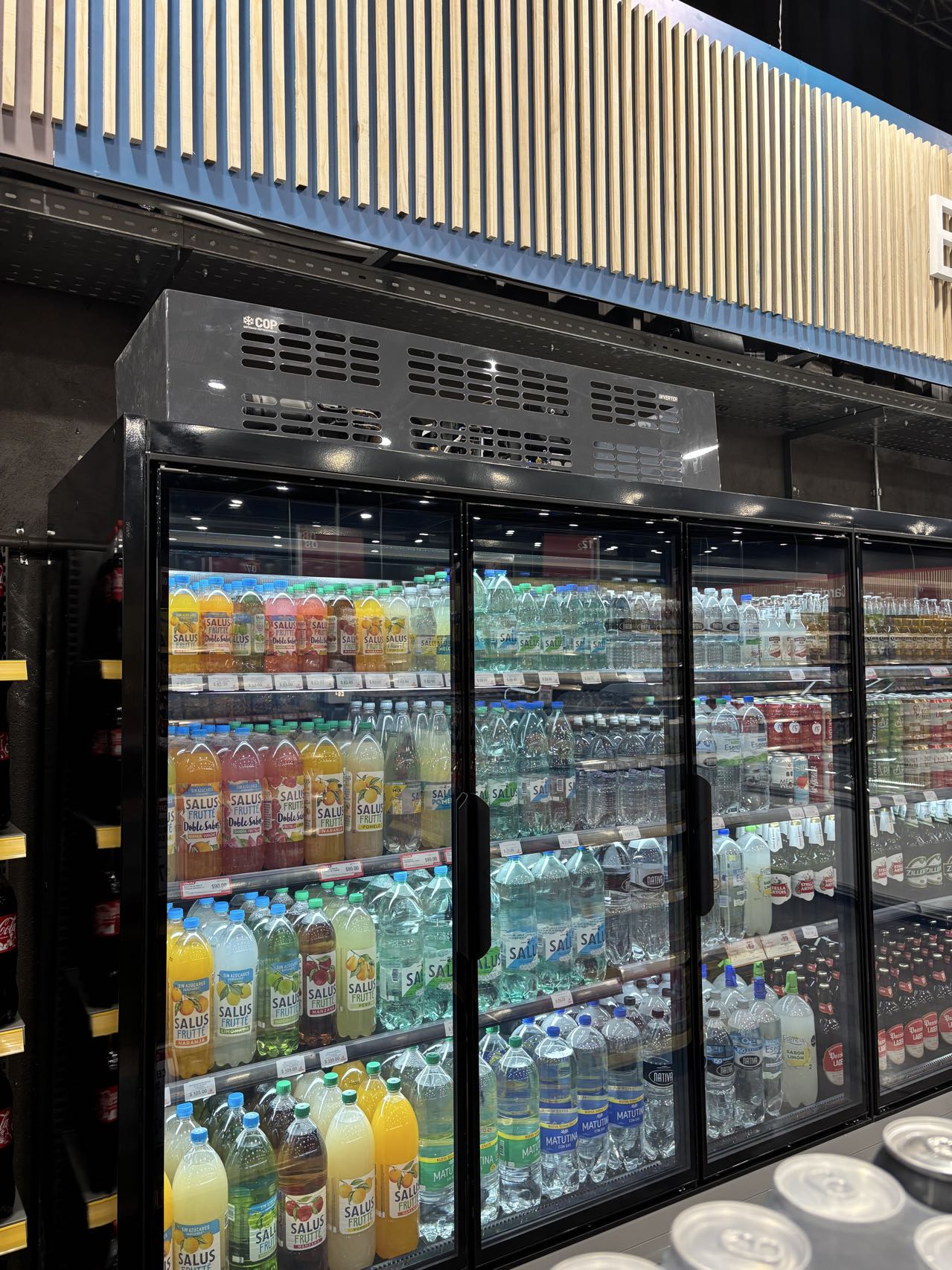In today’s retail and food-service environment, the fridge display plays a critical role in product presentation, temperature control, and customer purchasing behavior. For supermarkets, convenience stores, beverage brands, distributors, and commercial equipment buyers, selecting the right fridge display directly impacts product freshness, energy efficiency, and sales performance. As the cold-chain industry continues to evolve, understanding how modern display refrigerators work—and how to choose the right one—is essential for long-term business operations.
What Is a Fridge Display?
A fridge display is a commercial refrigeration unit designed to store and showcase food, beverages, and perishable products while maintaining optimal temperature and visibility. Unlike standard refrigerators, commercial display fridges are built with transparent glass doors, LED lighting, advanced cooling systems, and energy-efficient components tailored for continuous operation in high-traffic environments.
Key Features and Advantages
Modern fridge display units offer several benefits that help businesses improve product presentation and operational efficiency:
-
High-Visibility Glass Doors
Maximizes product exposure and enhances impulse buying. -
Advanced Cooling Technology
Ensures uniform temperature distribution to keep products fresh. -
Energy-Efficient Components
LED lighting, inverter compressors, and eco-friendly refrigerants reduce power consumption. -
Durable Commercial-Grade Build
Designed for long-hour usage in supermarkets, cafés, and retail stores. -
Flexible Configurations
Available in single-door, double-door, multi-deck, countertop, and island-style designs.
These features make fridge displays essential equipment in modern food and beverage retail environments.
Industrial Applications
Fridge displays are used across a wide range of B2B commercial sectors. Common applications include:
-
Supermarkets and convenience stores
-
Beverage and dairy product merchandising
-
Bakeries and cafés
-
Hotels, restaurants, and catering businesses (HORECA)
-
Pharmaceutical or health-product cold storage
-
Cold-chain distributors and brand marketing displays
Their versatility allows businesses to maintain product quality while enhancing brand visibility and customer experience.
How to Choose the Right Fridge Display
Choosing the right commercial display refrigerator requires evaluating performance, energy efficiency, and usage scenarios. Key considerations include:
-
Temperature Range & Stability
Ensure the unit maintains consistent temperatures for the product category. -
Energy Consumption
Look for energy-saving technologies to reduce operational costs. -
Size & Capacity
Should match store layout and expected product volume. -
Cooling System Type
Options include direct cooling, fan cooling, and inverter-based systems. -
Material & Build Quality
Stainless steel interiors, durable shelving, and high-grade insulation improve longevity. -
Brand Support & After-Sales Service
Essential for minimizing downtime and ensuring long-term reliability.
A well-chosen fridge display improves product preservation, reduces energy use, and enhances retail appeal.
Conclusion
The fridge display is more than refrigeration—it is a strategic retail tool that affects customer engagement, product safety, and store profitability. For B2B buyers in retail, food service, and distribution, selecting the right unit involves a balance of design, performance, and efficiency. Understanding the technology and selection criteria behind display refrigerators enables businesses to build reliable cold-storage systems, optimize operations, and deliver a better shopping experience.
FAQ: Fridge Display
1. What types of businesses need fridge displays?
Supermarkets, convenience stores, restaurants, cafés, beverage brands, and cold-chain distributors.
2. Are energy-efficient fridge displays worth the investment?
Yes. Lower electricity consumption significantly reduces long-term operating costs.
3. How often should a fridge display be maintained?
Routine cleaning and quarterly inspections of coils, seals, and cooling components are recommended.
4. Can fridge displays be customized?
Yes. Many manufacturers offer options for branding, shelving layout, temperature settings, and door styles.
Post time: Nov-13-2025





